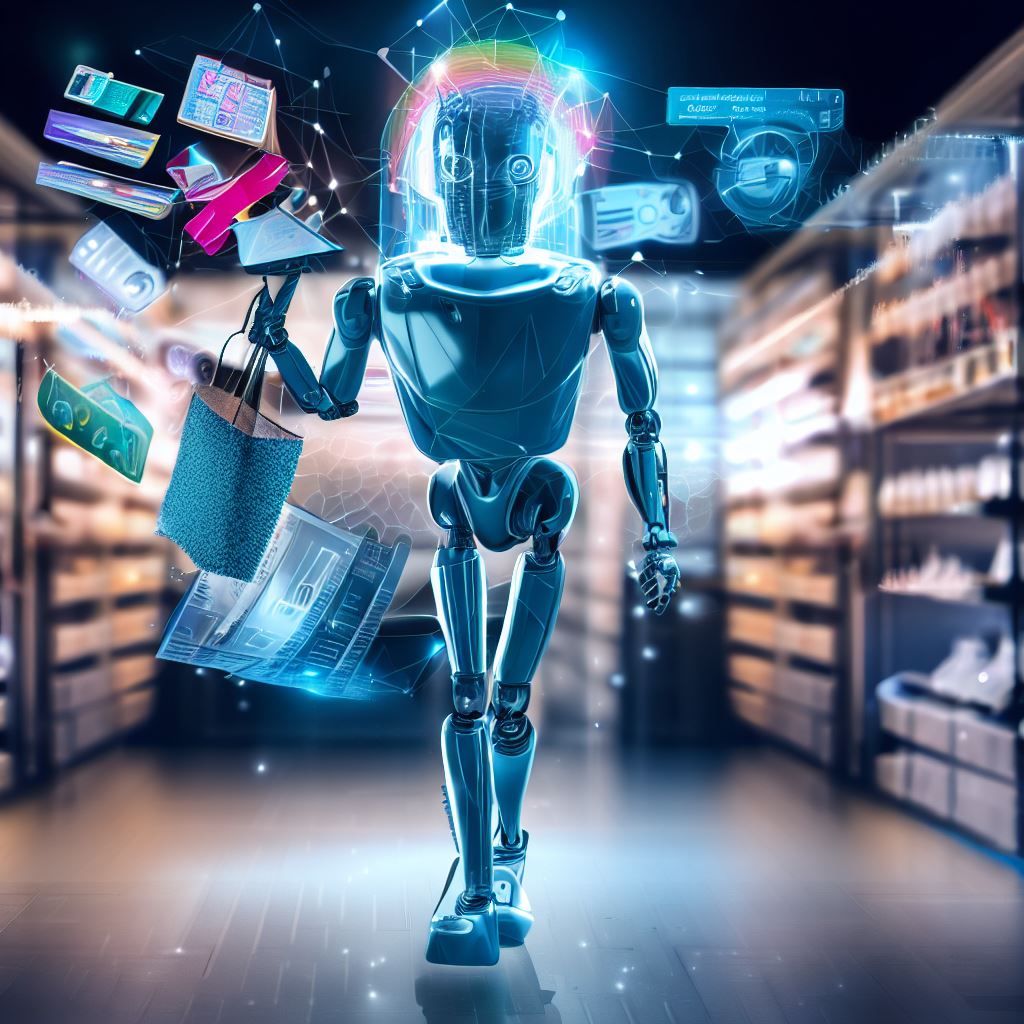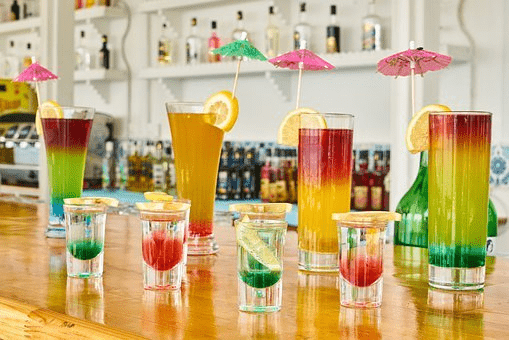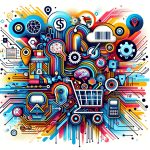
Harnessing the Power of AI
Promotions are a key component of any successful marketing strategy, but they can also be time-consuming and challenging to manage effectively.
In this course, we’ll explore how AI can be used to streamline the promotions management process and deliver better results.
We’ll start by discussing the basics of promotions management and the challenges that marketers face when designing and executing promotions.
We’ll then dive into the world of AI, exploring the different ways that machine learning algorithms can be used to optimize promotions for maximum impact.
We’ll cover a range of AI-powered tools and techniques, including predictive analytics, natural language processing, and computer vision.
We’ll also discuss how to integrate these tools into your existing promotions management workflows and how to measure the success of your AI-powered campaigns.
By the end of the article, you’ll have a deeper understanding of how AI can be used to revolutionize your promotions management efforts and drive better results for your business.
You’ll also have hands-on experience with some of the latest AI-powered tools and techniques for promotions management.
AI can streamline the promotions management process and deliver better results in retail by making promotions more effective and efficient.
Here are some ways AI can be used:
Predictive Analytics for Promotions:
AI can be used to analyze historical sales and promotions data to predict the outcome of future promotions.
These insights can help retailers determine the most effective type of promotions, the best time to run them, and the most responsive customer segments.
AI can also predict the impact of external factors like seasonality, holidays, or weather on promotional effectiveness.
Customer Segmentation:
Machine learning algorithms, such as clustering, can be used to segment customers based on their purchasing behavior, demographics, preferences, and more.
These insights can then be used to tailor promotions to different customer segments, making them more relevant and effective.
Personalized Promotions:
AI can analyze individual customer behavior, preferences, and purchase history to deliver highly targeted and personalized promotions.
Personalized promotions are more likely to resonate with customers and drive conversions than generic, one-size-fits-all promotions.
Dynamic Pricing:
AI can be used to implement dynamic pricing strategies, where prices are adjusted in real-time based on supply, demand, and other factors.
This can help maximize revenue or sell-through during promotional periods.
Inventory Management:
AI can help retailers maintain optimal inventory levels during promotions.
It can predict demand for promotional items and recommend appropriate stock levels to prevent stock-outs or overstocks.
Promotion Optimization:
AI can test different promotional strategies and measure their effectiveness.
This allows retailers to optimize their promotional mix and allocate their promotional budget more effectively.
Competitor Analysis:
AI can monitor competitor promotions in real-time and provide insights to help retailers adjust their own promotions and stay competitive.
Sentiment Analysis:
AI can analyze customer reviews, social media comments, and other feedback to measure customer response to promotions.
This can provide valuable insights to improve future promotions.
A/B Testing:
Machine learning can enhance A/B testing of different promotional strategies.
Algorithms can determine the optimal allocation of customers to different variants and adjust this allocation in real-time based on initial results.
This can help find the most effective promotional strategy faster and with fewer resources.
Competitor Analysis:
Machine learning can be used to monitor and analyze competitor promotions and pricing in real-time.
These insights can help adjust your own promotions to stay competitive in the market.
Implementing AI in promotions management can be a complex process that requires high-quality data, robust AI models, and seamless integration with existing systems.
However, with the right approach, it can deliver significant benefits and give retailers a competitive edge.
Promotions management is the process of planning, executing, and evaluating promotional activities aimed at increasing sales and improving brand visibility.
It’s a key part of marketing that includes several elements such as discounts, special offers, product bundles, coupons, rebates, contests, and loyalty programs.
Here are the basic steps involved in promotions management:
Objective Setting:
The first step is to set clear, measurable objectives for the promotion.
This could be to increase sales, attract new customers, clear out old inventory, or promote a new product.
Target Audience Identification:
Next, the target audience for the promotion needs to be identified.
This could be a broad audience or a specific customer segment, depending on the objectives.
Promotion Design:
The promotion needs to be designed to attract the target audience and achieve the promotional objectives.
This involves deciding on the type of promotion, the promotional message, and the promotional channels.
Promotion Execution:
The promotion is then executed, which involves communicating the promotion to the target audience, managing inventory, and handling customer queries and issues.
Promotion Evaluation:
After the promotion ends, its performance is evaluated against the objectives.
This involves analyzing sales data, customer feedback, and other metrics to determine the effectiveness of the promotion.
Promotions management can be a complex process with several challenges, including:
Setting the Right Objectives:
One of the biggest challenges is setting clear, measurable objectives that align with the overall business goals.
Without clear objectives, it’s difficult to design effective promotions or evaluate their success.
Targeting the Right Audience:
Identifying the right target audience can be challenging, especially in markets with diverse customer segments.
Poor targeting can result in promotions reaching the wrong audience, leading to wasted resources and poor results.
Designing Effective Promotions:
Designing promotions that are attractive to customers, yet profitable for the business, can be tricky.
This requires a deep understanding of customer behavior and preferences, as well as sound financial planning.
Managing Inventory:
Promotions can lead to sudden spikes in demand, making inventory management challenging.
Understocking can lead to missed sales opportunities, while overstocking can lead to high carrying costs and potential wastage.
Measuring Promotion Effectiveness:
Measuring the effectiveness of promotions can be challenging, especially when multiple promotions are running concurrently.
This requires robust data collection and analysis systems, and the ability to isolate the effects of individual promotions.
Balancing Short-Term Sales and Long-Term Brand Image:
Promotions can boost short-term sales, but if overused, they can harm the brand’s long-term image by making it seem cheap or low-quality.
Balancing these two aspects is a constant challenge in promotions management.
By understanding these challenges and implementing robust strategies and systems to address them, marketers can run successful promotions that drive sales and enhance brand visibility.
AI-powered tools and techniques are reshaping the landscape of promotions management.
Here are a few of them:
Predictive Analytics:
These tools use AI algorithms to predict the potential impact of different promotions strategies based on historical sales, customer behavior, and other relevant data.
Tools like Microsoft Azure, RapidMiner, Alteryx, and DataRobot are popular predictive analytics platforms.
Natural Language Processing (NLP):
NLP tools analyze text data from customer reviews, social media posts, and other sources to gauge customer sentiment towards specific promotions.
Tools like Google’s Natural Language API, IBM Watson, and Amazon Comprehend provide NLP capabilities.
Computer Vision:
Computer Vision tools can analyze images and videos to gather insights that can be used in promotions.
For instance, it can be used to analyze shelf space in physical stores, track customer movement and behavior, or analyze user-generated content on social media.
OpenCV, Google Vision, and Amazon Rekognition are a few examples of computer vision tools.
Integrating these AI-powered tools into existing promotions management workflows typically involves the following steps:
Data Integration:
The first step is to integrate these tools with your existing data sources.
This could involve connecting the tool to your databases, CRM systems, or other data repositories.
Model Training:
Next, the AI models need to be trained on your data.
This typically involves selecting a suitable model, providing it with training data, and tuning it to achieve the best results.
Model Deployment:
Once the models are trained, they need to be deployed into your promotions management workflow.
This could involve integrating the model with your promotions management software or developing custom applications or interfaces.
Monitoring and Updating:
Finally, the models need to be continuously monitored and updated to ensure they remain effective as market conditions change.
This involves tracking model performance, retraining models on new data, and adjusting models as needed.
Measuring the success of AI-powered campaigns involves tracking metrics that align with your promotional objectives.
This could include:
Sales Metrics:
These could include total sales, sales of promoted items, or incremental sales attributable to the promotion.
Customer Metrics:
These could include new customers acquired, customer retention rate, or customer lifetime value.
Engagement Metrics:
These could include click-through rates, conversion rates, or social media engagement.
Efficiency Metrics:
These could include return on investment (ROI), cost per acquisition (CPA), or promotional uplift.
By carefully integrating AI-powered tools into your promotions management workflow and regularly measuring their impact, you can drive more effective promotions and gain a competitive edge in the market.



















